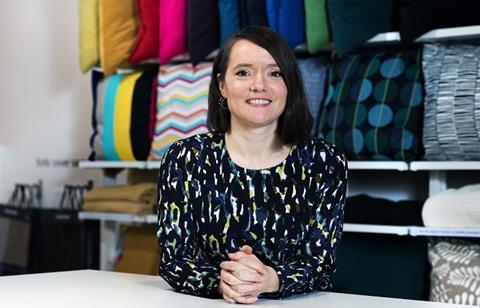
Homewear retail organisation Ikea has reported a 6.9% mean gender pay gap for fixed hourly pay across 10,000 retail employees, and a 10.6% mean gender pay gap in favour of women across its 900 distribution employees.
The organisation has reported its gender pay gap data in line with the government’s gender pay gap reporting regulations and ahead of the private sector submission deadline of 4 April 2018.
The gender pay gap reporting regulations require organisations with 250 or more employees to publish the difference between both the mean and median hourly rate of pay for male and female full-time employees; the difference between both the mean bonus pay and median bonus pay for male and female employees; the proportions of male and female employees who were awarded bonus pay; and the proportions of male and female full-time employees in the lower, lower middle, upper middle and upper quartile pay bands.
Ikea’s median gender pay gap for fixed hourly pay is 6.1% for retail staff and 0.9% in favour of women for distribution employees.
Its mean gender pay gap for bonuses paid in the year to 5 April 2017 is 9.7% for retail employees, and the median gender pay gap for bonus payments is 16.4%. For distribution employees, the mean gender pay gap for bonuses is 20.5%, and the median gender pay gap for bonus payments is 1.2%, both in favour of women. Over this period, 51.7% of female retail employees received a bonus payment, compared to 17.8% of female distribution employees.
Less than half (44.9%) of employees in the highest pay quartile working in the retail division at Ikea are female, compared to 45.9% in the second quartile, 54.7% in the third quartile and 57.1% in the lowest pay quartile. In total, 50.7% of retail employees are female. Under a fifth (21.4%) of female employees working in Ikea’s distribution division are in the highest pay quartile, compared to 14.4% in the second quartile, 10.8% in the third quartile and 19.6% in the lowest pay quartile. More than one in 10 (16.6%) of distribution employees are female. More than half (52.5%) of Ikea’s total workforce are female, compared to 47.5% who are male.
Ikea attributes its gender pay gap in its retail section to the fact that more male employees than female employees are occupied at store management level and in senior country management positions. In addition, a higher proportion of female employees work on a part-time basis. The gender pay gap for Ikea’s distribution division is in favour of women; the organisation believes this is because most of the women employed in this section are holding managerial roles, which tend to be higher paid and are more likely to be full-time.
To address its gender pay gap, Ikea has 50:50 gender split targets, operates a One Ikea bonus scheme that recognises all employees, commits to paying all staff the voluntary living wage and provides an enhanced maternity leave offering. This includes paying 100% of employees’ average weekly earnings for the first six weeks of leave for staff with more than 26 weeks’ service, with employees who have been at the organisation for at least two years also receiving an additional 12 weeks of leave at 50% of pay. Furthermore, returning new mothers are able to work half their hours for full pay for the first three months back at work after maternity leave.
Ikea offers a learning and development process, which includes a talent week, has implemented inclusive policies and supports flexible working, provides mandatory inclusion and unconscious bias e-learning and training and anchors diversity and inclusion in its recruitment approaches. Ikea additionally plans to develop a women’s network in order to facilitate networking, support and mentoring opportunities. The organisation’s senior leadership are also involved in an external women’s empowerment network.
Carin Hammer Blakebrough (pictured), country HR manager, UK and Ireland at Ikea, said: “We welcome the gender pay gap regulation as it leads to greater transparency and encourages action from businesses across the UK to reduce the gap. While we recognise that our results are smaller than the UK average for retail and reversed for distribution, this exercise has helped us to identify where we should focus our efforts. We want to eliminate the gender pay gap and continue to nurture an environment where each [employee] has an opportunity to strive.
“We have a global 50:50 gender split target and we’re proud to have already achieved this across our entire UK organisation. Since the data for our report was collected, we’ve hired more women to our country management team bringing the total to seven women and five men. Diversity and inclusion is embedded into Ikea’s vision and values. We know a more diverse workforce leads to better innovation and creativity, which is why it is integrated into all our business plans and seen as a big driver of performance and growth.
“We are going all in for gender equality and our commitment to close the gender pay gap is just one part of the holistic approach taken across the Ikea Group to strive for excellent conditions for [employees], no matter their identity or background. We always listen to feedback from [employees] and will constantly seek new ways to achieve and maintain gender equality.”











